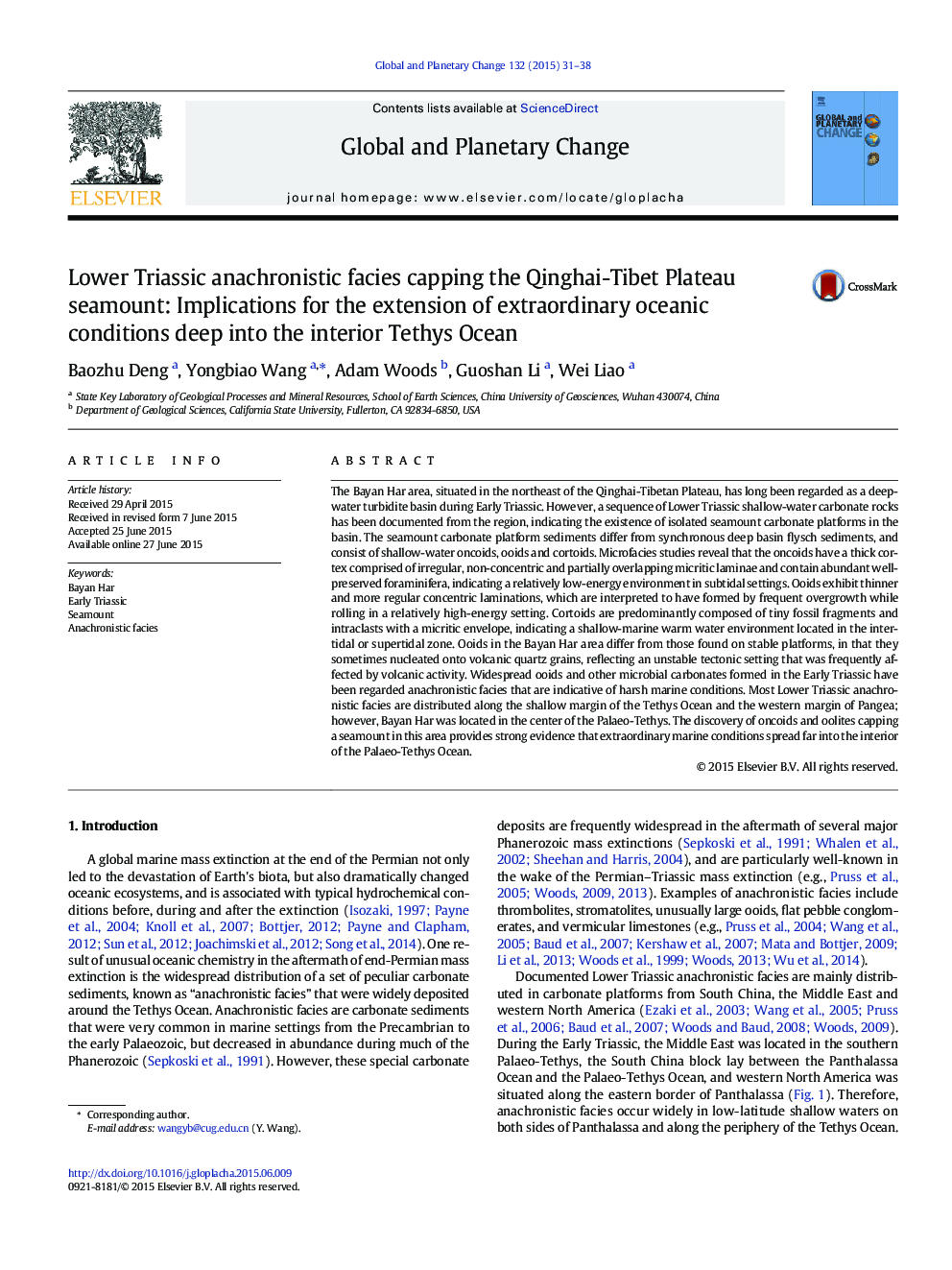| کد مقاله | کد نشریه | سال انتشار | مقاله انگلیسی | نسخه تمام متن |
|---|---|---|---|---|
| 4463350 | 1621650 | 2015 | 8 صفحه PDF | دانلود رایگان |
• First report of Early Triassic anachronistic facies in central Palaeo-Tethys Ocean
• Limited area of seamount environment hosts a variety of microbial carbonate grains.
• Volcanic clastics may provide nuclei for the ooids deposited on the top of seamount.
• Extraordinary marine conditions spread far into the interior of the Tethys Ocean.
The Bayan Har area, situated in the northeast of the Qinghai-Tibetan Plateau, has long been regarded as a deep-water turbidite basin during Early Triassic. However, a sequence of Lower Triassic shallow-water carbonate rocks has been documented from the region, indicating the existence of isolated seamount carbonate platforms in the basin. The seamount carbonate platform sediments differ from synchronous deep basin flysch sediments, and consist of shallow-water oncoids, ooids and cortoids. Microfacies studies reveal that the oncoids have a thick cortex comprised of irregular, non-concentric and partially overlapping micritic laminae and contain abundant well-preserved foraminifera, indicating a relatively low-energy environment in subtidal settings. Ooids exhibit thinner and more regular concentric laminations, which are interpreted to have formed by frequent overgrowth while rolling in a relatively high-energy setting. Cortoids are predominantly composed of tiny fossil fragments and intraclasts with a micritic envelope, indicating a shallow-marine warm water environment located in the intertidal or supertidal zone. Ooids in the Bayan Har area differ from those found on stable platforms, in that they sometimes nucleated onto volcanic quartz grains, reflecting an unstable tectonic setting that was frequently affected by volcanic activity. Widespread ooids and other microbial carbonates formed in the Early Triassic have been regarded anachronistic facies that are indicative of harsh marine conditions. Most Lower Triassic anachronistic facies are distributed along the shallow margin of the Tethys Ocean and the western margin of Pangea; however, Bayan Har was located in the center of the Palaeo-Tethys. The discovery of oncoids and oolites capping a seamount in this area provides strong evidence that extraordinary marine conditions spread far into the interior of the Palaeo-Tethys Ocean.
Journal: Global and Planetary Change - Volume 132, September 2015, Pages 31–38
